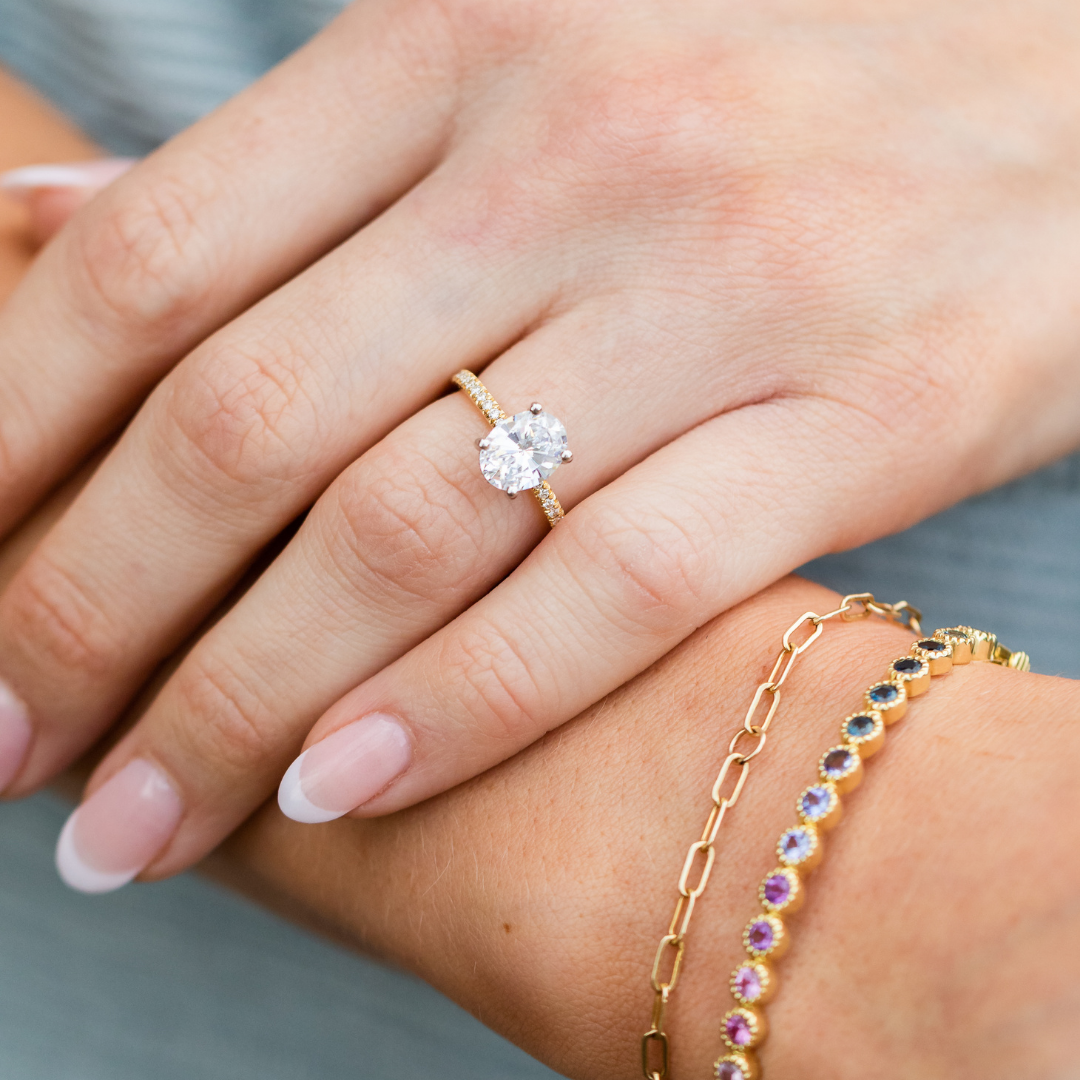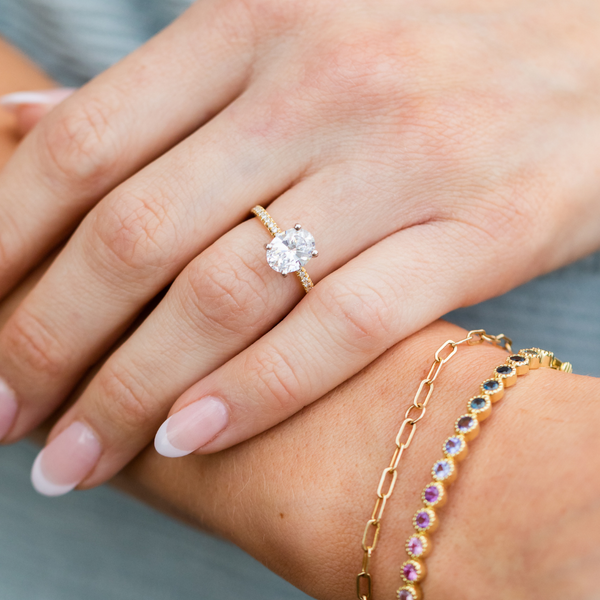
We spend so much time talking about diamonds – diamonds are forever, they are a girl’s best friend – but we rarely talk about moissanite, the naturally occurring, mining-free gemstone often confused with a diamond. Referred to as a “diamond simulant”, moissanite has a few compositional and visual differences that set it apart from a real diamond. Check out our breakdown below!

Naturally Occurring, Mine-Free
First discovered in 1893, by scientist Henri Moissan, these microscopic particles were mistaken for diamonds when they were found inside a meteor crater. Moissan would later determine these crystals were actually made up of silicon carbide, and they would soon come to be named after him. One could say moissanite is a gemstone born of stars. These days, it is very rare to find naturally occurring moissanite, therefore, most moissanite crystals you can buy today will be laboratory-created.
How Does it Compare to a Diamond?
Value
Because moissanite does not have the same chemical and physical properties as diamonds, (a diamond is purely carbon while moissanite is carbon and silica), they sell at a lower price point. Whereas the Four C’s have the biggest effect on a diamond’s cost, moissanite gems vary in price based on color.
Durability
Measured on the Mohs Scale of Hardness, moissanite gems come in at 9.25, compared to the diamond’s measurement of a 10, making it the hardest known mineral. With this perfect score, the diamond is most suitable for daily wear, making it the best option for engagement rings, but moissanite is a close second, especially considering the small gap in measurements.
Brilliance
Referring to the refracted light from the interior of a gem, brilliance is what gives a stone that fiery sparkle. While both moissanite and diamonds have a specific sparkle, it is a much different type that distinguishes them from each other. Diamonds reflect light in three different ways: brilliance, which is the white light reflected back, dispersion, a rainbow of colors reflected through, and scintillation, the return of light from the surface. Moissanite’s brilliance has to do with its faceting and has a higher refractive index than that of diamond, giving it an almost disco-ball effect, especially when the light hits it just right. The bigger the stone, the flashier the sparkle, and for some people, it is too much. Because it is doubly refractive, moissanite makes a great thermal conductor, which also means it can sometimes pass for a diamond on a handheld tester.
Color
While most moissanites are deemed colorless, there still remains a yellowish or grayish hue and the bigger the stone, the more visible this hue becomes. Natural diamonds are completely colorless, with no trace of yellow, brown, or grey and instead only a natural brilliant white.
Final Thoughts
If you’re looking for a budget-friendly alternative to a diamond, consider the moissanite. One of the toughest gemstones besides the diamond, it makes a great everyday wearable stone with extra fiery sparkle, if that’s the look you want to achieve.


